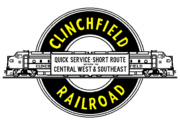
Track Plans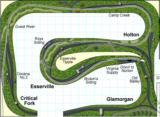 CRR Track Plans CRR Track Plans |
Photos | Models |
History (by Bob Helm):
The Carolina Clinchfield and Ohio Railway (CC&O) was built as a 277 mile bridge route across two mountain ranges operating in five states: Kentucky, Virginia, Tennessee, North Carolina, and South Carolina. George L. Carter, known as the “Father” of the modern day Clinchfield, organized the CC&O Railway in March 1908 from four existing short railroads, several charters, and failed efforts. His vision was to build a connection from the port of Charleston, SC through the Coal fields of Virginia and Kentucky to the markets of Cincinnati and the Ohio River. Carter commissioned M. J. Caples from the Norfolk and Western Railway to engineer a route for heavy coal hauling and merchandise traffic across the Blue Ridge Mountains. Caples result was a railroad designed to very high standards for the time. Actual maximum grades were kept at 1.5% against Southbound traffic through the Breaks of the Big Sandy River, 1.2% up the Blue Ridge climb Northbound, and less than a mile of 1.8% Northbound grade at Sandy Ridge. Maximum curves of 14 degrees were not exceeded, while most were 10 degrees or less in 20 degree country. Scientific American called it the costliest railroad to cross the Appalachian Blue Ridge mountains. The modern day CC&O has existed almost as built with few re-alignments to haul record tonnage and make record profits for almost ninety years.
 The link with the C&O was made upon the completion of the building of the Elkhorn Extension from Dante, to Elkhorn City. Carter drove the ceremonial golden spike to link the line south of Dante with the C&O and to complete the railroad’s mainline on February 9th, 1915. This connection was vital in making the Clinchfield an important part of the National railway map. The CC&O, with its southern terminus at Spartanburg, SC, quickly became a serious bridge route for merchandise traffic from the Midwest to Southeastern markets.
The link with the C&O was made upon the completion of the building of the Elkhorn Extension from Dante, to Elkhorn City. Carter drove the ceremonial golden spike to link the line south of Dante with the C&O and to complete the railroad’s mainline on February 9th, 1915. This connection was vital in making the Clinchfield an important part of the National railway map. The CC&O, with its southern terminus at Spartanburg, SC, quickly became a serious bridge route for merchandise traffic from the Midwest to Southeastern markets.
While 1/3 of the revenue was generated hauling merchandise freight; the Clinchfield was known for hauling COAL! The North end of the railroad served dozens of on-line tipples and loaders in the coalfields of Southwest Virginia and Eastern Kentucky. Clinchfield Coal Company’s huge Moss #1 Preparation Plant generated thousands of coal loads per year for the Clinchfield to ship to market. Utilizing three major branches, the Fremont Branch, Nora Spur, and Haysi Railroad, carload after carload of black diamonds were shipped from the mines to the Moss plant to be cleaned, processed, and reloaded into hoppers destined for Dante to be weighed and classified. A large percentage of the coal carried, however, came from other railroads including the C&O, the L&N, Interstate, and N&W. Besides supplying some large on-line customers, the Clinchfield moved this coal both North to Great Lake exports and South to feed several hungry power plants in the Carolinas.
The Clinchfield had several major traffic interchanges along its route. It interchanged with the C&O at Elkhorn City, KY; the N&W (and L&N from 1973-1986) at St Paul, VA and Kiser, VA; the Interstate (Southern after 1960)-transporting mostly L&N coal, at Miller Yard, VA; the Southern at Speers Ferry, VA, Frisco, Kingsport, and Johnson City, TN, Marion, NC, and Spartanburg, SC; the SAL (later SCL) at Bostic, NC, and the ACL (later SCL) at Spartanburg. In addition, several smaller roads like the Piedmont and Northern and Charleston & Western Carolina interchanged along the route.
In 1924, the ICC approved an agreement for the Atlantic Coast Line and Louisville and Nashville railroads to lease the CC&O for a period of 999 years. The operating company from this lease, called the Clinchfield Railroad Company, conducted a highly profitable business until December 31, 1982, when the CSX Corporation bought all shares of the CC&O and retired them. In 1974, Clinchfield, L&N, SCL, Georgia and West Point Railroads began marketing their collective transportation as the Family Lines System to compete with rival Southern Railway. Despite common paint schemes, common locomotive purchases, and pooling of motive power, the Clinchfield maintained itself as a separate entity until the merger into the Seaboard System in December 1982. Again in 1986, the Seaboard System was merged into the Chessie System to become CSX Transportation, which owns and operates the original Carolina Clinchfield and Ohio Railway today.
Diesel Roster:
| Number | Model | Builder | Date |
| 200 | FP7A | EMD | 2-52 |
| 250 | F7B | EMD | 6-50 |
| 350-355 | SW7 | EMD | 7-50 |
| 356-360 | NW2 | EMD | 9-47 |
| 361 | NW3 | EMD | 3-42 |
| 800-803 | F5A | EMD | 12-48 |
| 804-823 | F7A | EMD | 4-49 – 12-52 |
| 850, 851 | F5B | EMD | 12-48 |
| 852-869 | F7B | EMD | 3-49 – 4-55 |
| 900-916 | GP7 | EMD | 12-50 – 12-52 |
| 917, 918 | GP9 | EMD | 12-56 |
| 919 | GP7 | EMD | 8-50 |
| 2000-2009 | GP38 | EMD | 4-67 |
| 3000-3024 | SD40 | EMD | 9-66 – 6-71 |
| 3600-3606 | U36C | GE | 10-71* |
| 3607-3624 | SD45-2 | EMD | 11-72 – 2-74 |
| 3625-3631 | SD45 | EMD | 10-71* |
| 4600-4605 | GP11 | ICG | 4-79 – 5-79** |
| 4606-4613 | GP16 | SCL | 2-80 – 7-81** |
| 6000-6045 | GP38-2 | EMD | 6-78 – 8-79 |
| 8034-8132 | SD40-2 | EMD | 7-79 – 9-81 |
* 3600-3606 traded to SCL for 3625-3631 in August/September 1977
** 4600-4613 rebuilt from CRR and SCL GP7s
Additional Articles:
- Clinchfield Operations on the Freemont Branch: The Moss Turn by Scott Jessee
- Clinchfield Steam-Era Helper Operations by Harry Sandlin
- Clinchfield Diesel-Era Helper Operations on the South End by Dave Beach
Related Products:
For related information, see the Family Lines, Seaboard System and CSX pages




 CRR Photos Page
CRR Photos Page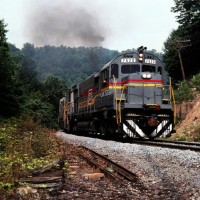 Family Lines Photo Page
Family Lines Photo Page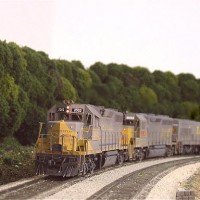 CRR Models Page
CRR Models Page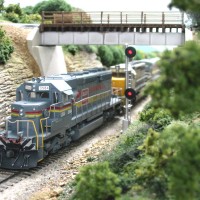 Family Lines Model Page
Family Lines Model Page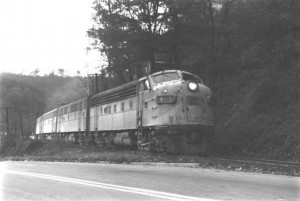
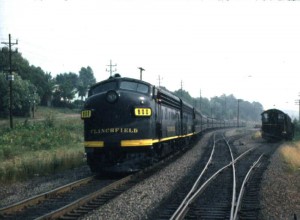
Thank you for sharing the history of the Clinchfield RR
Love the map with all the connections. Who would have thought that in the middle of the mountains all those lines were interconnected. Thanks. Jon